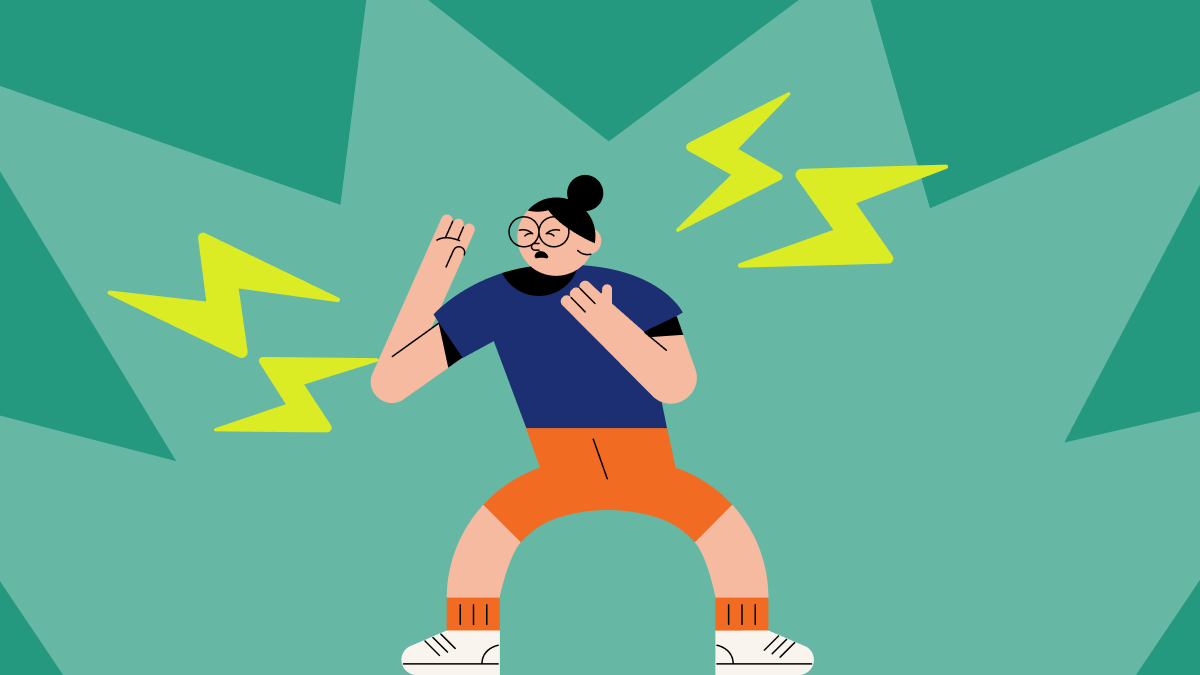Parents are all too familiar with the ups and downs of managing a child’s emotional and behavioural challenges. Just when you’ve made it through the “terrible twos,” along comes the “threenager” phase. Then, it’s onto school refusal or classroom antics.
These hurdles are often part of a child’s natural process of learning to self-regulate, but when does their outburst or withdrawal signal something more serious?
In this article, we’ll explore the most common emotional and behavioural disorders in children, the signs to look out for, and ways to support your child’s journey toward overall wellbeing.
Emotional disorders
Emotional disorders are often internalising problems, meaning they affect a child’s emotions on the inside rather than showing up in outward behaviour. Instead of acting out, a child may feel deeply sad, worried, or lonely. While it’s normal for kids to have mood swings, persistent emotional distress that interferes with their ability to function daily and interact with others may indicate an emotional disorder.
Signs and symptoms
Children with emotional disorders may exhibit a variety of signs, including:
| Somatic symptoms | Headaches, stomachaches, or persistent fatigue |
| Changes in sleep or appetite | Sleeping and/or eating too much or too little |
| Social withdrawal | A noticeable dip in school performance can be a red flag |
| Social withdrawal | Avoiding family and peers and spending excessive time alone |
| Persistent sadness or irritability | Temper outbursts or tantrums might be common |
| Low self-esteem | Feelings of worthlessness or inadequacy. |
| Unusual energy levels | Heightened energy, manifesting as racing thoughts or rapid speaking; or a loss of energy, leading to disinterest in activities that once brought them joy |
| Suicidal thoughts or behaviours | Feelings of hopelessness or risky behaviours such as self-harm |
Types of emotional disorders
1. Depressive disorders
- Major Depressive Disorder (MDD): Characterised by persistent sadness, loss of interest in activities, and impaired functioning across multiple areas of life, lasting at least two consecutive weeks.
- Persistent Depressive Disorder (PDD): Previously known as dysthymic disorder, this condition involves a chronic, lower-grade depressive mood that lasts for at least one year, often with periods of less severe symptoms.
- Disruptive Mood Dysregulation Disorder (DMDD): Marked by severe and recurrent temper outbursts that are disproportionate to the situation and an irritable, angry mood between episodes, typically diagnosed in children under 18.
2. Anxiety disorders
- Generalised Anxiety Disorder (GAD): Children with GAD often worry excessively about a wide range of things at school and home. This constant worry can make them feel restless, irritable, or physically tense.
- Panic Disorder: Even in the absence of actual danger, children may experience panic attacks, or sudden and intense episodes of fear or discomfort. These are often accompanied by physical symptoms such as palpitations and breathlessness, potentially leading to a persistent fear of experiencing these symptoms again and resulting in avoidance behaviours.
- Separation Anxiety Disorder: This occurs when a child becomes excessively anxious or fearful about being apart from their parents or caregivers. They may cling, refuse to go to school, or worry about bad things happening while they’re apart.
- Specific Phobias: These involve intense fears of specific things or situations, like heights, dogs, or needles. The fear is disproportionate to the actual threat but can lead to significant distress and avoidance.
3. Obsessive-Compulsive and Related Disorders
- Obsessive-Compulsive Disorder (OCD): OCD involves persistent, unwanted thoughts (obsessions) and repetitive behaviours or mental acts (compulsions) that a child engages in to reduce anxiety, but which can interfere with daily life.
- Body Dysmorphic Disorder (BDD): Children with BDD are excessively preoccupied with perceived flaws in their appearance, leading to repetitive checking or grooming. These concerns are usually unrealistic and can cause significant distress.
- Trichotillomania: This disorder involves the urge to pull out one’s hair, resulting in noticeable hair loss. It can be triggered by stress or anxiety and may occur in specific areas like the scalp, eyebrows, or eyelashes.
- Excoriation Disorder: This condition involves repetitive picking at one’s skin to relieve tension or anxiety. However, it can cause significant damage, often leading to sores or scars, and negatively impact the child’s wellbeing.
- Hoarding Disorder: Children with hoarding disorder struggle to part with possessions they’re emotionally attached to, regardless of their value. This often causes clutter, interference with daily functioning, and conflicts with parents.
4. Trauma and stressor-related disorders
- Post-traumatic stress disorder (PTSD): PTSD occurs after a child experiences a traumatic event (e.g. witnessing a car accident). It can develop after a month or more following a traumatic event and may persist for months or even years.
- Acute Stress Disorder: Similar to PTSD, Acute Stress Disorder occurs shortly after a traumatic event, lasting for at least 3 days but less than a month. Many recover from ASD within this period, but it can develop into PTSD if symptoms persist.
- Adjustment Disorder: This disorder happens when a child struggles to cope with a significant life change or stressor (e.g. their parents’ divorce) leading to emotional distress and difficulty adjusting.
Behavioural disorders
Behavioural disorders, on the other hand, are externalising problems that show up through visible actions such as aggression, defiance, or frequent outbursts. While occasional mischief or testing boundaries is a normal part of growing up, challenging behaviours may indicate a disorder if they affect a child’s ability to behave appropriately at home, engage in school, or get along with siblings and peers.
Signs and symptoms
| Aggression | Lashing out physically or verbally, like hitting classmates or destroying property when upset. |
| Defiance | Refusing to follow rules and challenging authority, such as ignoring a teacher’s instructions or arguing with parents. |
| Delinquency | Delinquent behaviours include lying, skipping classes, or breaking rules and laws. |
| Hyperactivity | Struggling to sit still or remain quiet in class as appropriate, often moving constantly and disrupting the class. |
| Inattention | Being easily distracted, forgetting instructions, or leaving tasks unfinished. |
| Impulsivity | Acting without thinking, like blurting out answers or taking risks without considering the consequences. |
| Substance use | Early vaping, smoking, or drinking alcohol can be signs of behavioural disorders in children. |
Types of behavioural disorders
1. Oppositional Defiance Disorder (ODD)
ODD involves a pattern of angry, defiant, or vindictive behaviour, typically toward authority figures. Children with ODD often argue with adults, refuse to follow rules, and intentionally provoke or challenge others. For example, they might repeatedly ignore their parents’ requests to clean their room or deliberately talk back to a teacher during class.
2. Conduct Disorder (CD)
Conduct Disorder is characterised by severe behaviours like aggression, deceit, and a blatant disregard for rules and the rights of others. For example, a child with a CD might repeatedly bully classmates, vandalise school property, or steal from stores, all while denying their involvement in destructive actions.
3. Attention-Deficit/Hyperactivity Disorder (ADHD)
Even though ADHD is commonly known as a behavioural disorder, it is technically a neurodevelopmental disorder. ADHD is characterised by persistent patterns of inattention, hyperactivity, and/or impulsivity. Children with ADHD may struggle to focus on or follow instructions, often appearing restless or distracted. For example, they might struggle to stay seated in class, blurting out answers or interrupting the teacher, or frequently forget assignments.
Behavioural disorders can impact a child’s functioning at school and home, and it’s natural for parents to feel overwhelmed watching their child struggle with academics or relationships. But with early diagnosis and the right support, positive change and growth are possible.
Diagnosing emotional and behavioural disorders
Only clinical psychologists and psychiatrists are qualified to diagnose mental health conditions, including emotional and behavioural disorders, in Singapore. Their diagnostic criteria usually follows the Diagnostic and Statistical Manual, Fifth Edition (DSM-5), and utilises information gathering approaches such as:
- Detailed history taking: This includes a thorough review of the child’s medical, developmental, family, social, educational, and emotional history.
- Observation of a child’s behaviour: Clinicians observe the child’s behaviour directly and gather feedback from parents, teachers, and peers.
- Screening tools, such as:
– Ages and Stages Questionnaire (ASQ)
– Adaptive Behaviour Assessment System (ABAS)
– Behaviour Assessment System for Children (BASC)
– Conners 3
– Strengths and Difficulties Questionnaire (SDQ)
Managing emotional and behavioural disorders
It takes a village to raise a child, and the same holds true when managing a child’s emotional or behavioural disorder. This often requires a multi-disciplinary approach, involving not only mental health professionals but also social care workers, educators, and, when necessary, pharmacists for medication management.
Here are some treatment strategies backed by evidence:
Parenting Skills Training
It’s completely understandable for parents to rely on controlling strategies and become less engaging when their children show signs of behavioural disorders. However, these methods often don’t lead to lasting change.
The good news is that with parenting skills training, parents can discover more effective ways to manage their child’s behaviour. This includes learning to identify and understand problematic behaviours from a new perspective, as well as gaining practical strategies to prevent and respond to them in a positive way. In fact, such parenting programmes, along with other psychosocial treatments, have proven to have a significant and lasting impact, particularly in reducing externalising symptoms.
Cognitive Behavioural Therapy (CBT)
Child- and family-focused Cognitive behavioural Therapy (CBT) has proven to be effective in addressing emotional and behavioural disorders, particularly depressive and anxiety disorders.
For children who face repeated challenges at school or in social interactions, CBT can boost their self-esteem by helping them identify and nurture their unique talents. It also focuses on enhancing social skills, teaching children how to engage in conversations and play cooperatively with others.
Address emotional and behavioural disorders at Intellect Clinic
Whether you’re seeking an assessment or need support after a diagnosis, our clinical psychologists and counsellors are here to guide your child every step of the way. Our services aren’t just for children — we also offer counselling and psychotherapy to help you navigate family and parenting concerns.
50-minute sessions with our counsellors and clinical psychologists are priced at $160 and $240 (Singapore dollars) respectively, and we offer appointments at our clinics in:
- Marina One
- Dhoby Gaut
- Tanjong Pagar
- Woodleigh
- Tembeling
Reach out to us today for an appointment.








